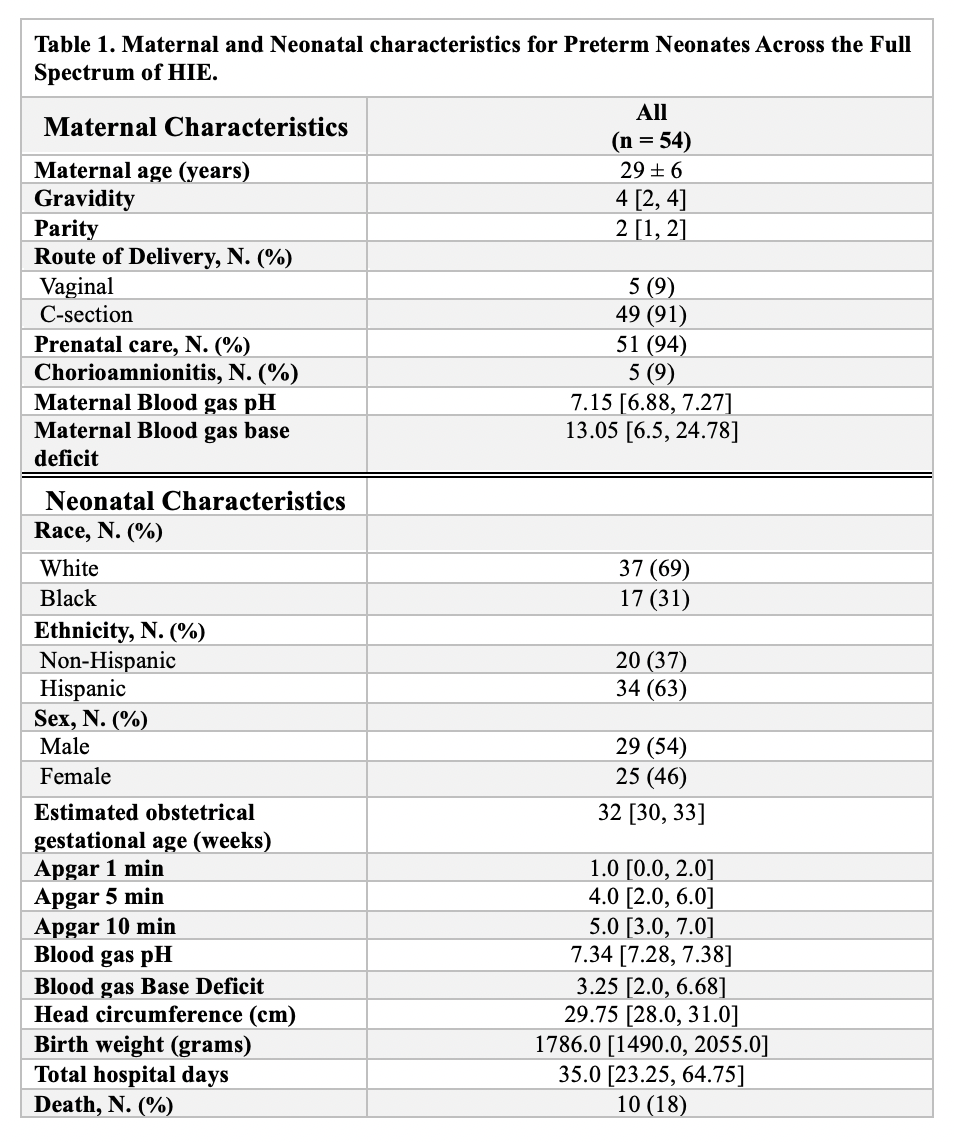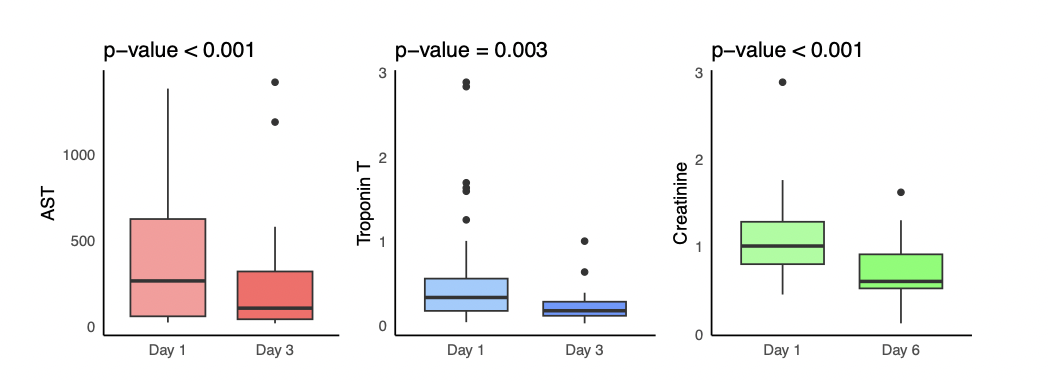Neonatal General 2: Neurology
Session: Neonatal General 2: Neurology
319 - Multi-organ dysfunction in Preterm neonates with Hypoxic-Ischemic Encephalopathy
Friday, April 25, 2025
5:30pm - 7:45pm HST
Publication Number: 319.5596
Lynn Bitar, University of Texas Southwestern Medical School, Dallas, TX, United States; Srinivas Kota, University of Texas Southwestern Medical School, Dallas, TX, United States; Michelle Machie, University of Texas Southwestern Medical School, Dallas, TX, United States; Suleiman Mashat, University of Ottawa Faculty of Medicine, Ottawa, ON, Canada; Brooke E. Boisvert, University of Texas Southwestern Medical School, Highland Park, TX, United States; Lina Chalak, UTSW, Dallas, TX, United States

Lynn Bitar, MD MSc
Postdoctoral Research Fellow
University of Texas Southwestern Medical School
Dallas, Texas, United States
Presenting Author(s)
Background: Hypoxic-ischemic encephalopathy (HIE) is a critical condition resulting from oxygen deprivation at birth, which leads to multiorgan dysfunction (MOD) as the body attempts to redistribute cardiac output to spare the brain.
Objective: While most research has focused on the impact of HIE in term neonates, this study shifts the focus to preterm neonates with HIE, aiming to (1) provide an accurate incidence of MOD, including the extent and number of organs affected, and (2) to explore the association between MOD, MRI findings, and EEG abnormalities in this patient population.
Design/Methods: We conducted a retrospective analysis of preterm neonates ( < 35 weeks’ gestation) with HIE admitted to the Neonatal Intensive Care Unit (NICU) at Parkland Hospital in Dallas between 2009 and 2023. MOD was assessed by evaluating cardiac, renal, and liver function using various parameters, including echocardiography, serial troponin T, serial creatinine, urine output, as well as serial aspartate transaminase (AST) and alanine transaminase (ALT) levels upon admission and at multiple time points during hospitalization.
Results: During the study period, 54 preterm neonates (0.4/1000) were diagnosed with HIE (Table 1), of whom 45 had mild HIE, 5 moderate, and 4 severe based on the Sarnat exam, all presenting with one or more organ injuries. A significant portion of the cohort exhibited MOD: 67% had liver injury (AST 277.0 [68.0, 686.8]), 55% had heart injury (Troponin T 0.3 [0.2, 0.6]), and 37% had kidney injury (oliguria with creatinine 1.0 [0.8, 1.3]). Additionally, 35% of the neonates experienced seizures, and 68% had a discontinuous EEG background. Brain MRI/MRS abnormalities were detected in 87% of the cases (white matter injury, hemorrhage, hydrocephalus), and 10 out of the 54 neonates (19%) died to complications arising from organ injuries. AST, Troponin T, and creatinine levels were significantly higher on Day 1 compared to Day 3 and 6 (Figure 1).
Conclusion(s): This study underscores the elevated risk of MOD in preterm neonates with HIE, focusing on the potential underdiagnosis of organ injuries in this population. Further research with larger sample sizes is needed to improve understanding and management of this critical condition.
Table 1. Maternal and Neonatal characteristics for Preterm Neonates Across the Full Spectrum of HIE.
 For continuous variables, normality was tested using the Shapiro-Wilk test. Variables with a normal distribution are reported with the mean and standard deviation, while non-normal distributions are summarized with the median and the 25th and 75th percentiles. Categorical variables are presented with counts (N) and percentages (%).
For continuous variables, normality was tested using the Shapiro-Wilk test. Variables with a normal distribution are reported with the mean and standard deviation, while non-normal distributions are summarized with the median and the 25th and 75th percentiles. Categorical variables are presented with counts (N) and percentages (%).Figure 1: Biomarker Levels Across Different Time Points in Neonates with HIE
 Distribution of AST, Troponin T, and Creatinine showing significant differences between Day 1 and Day 3, as determined by the paired Wilcoxon rank-sum test.
Distribution of AST, Troponin T, and Creatinine showing significant differences between Day 1 and Day 3, as determined by the paired Wilcoxon rank-sum test.Table 1. Maternal and Neonatal characteristics for Preterm Neonates Across the Full Spectrum of HIE.
 For continuous variables, normality was tested using the Shapiro-Wilk test. Variables with a normal distribution are reported with the mean and standard deviation, while non-normal distributions are summarized with the median and the 25th and 75th percentiles. Categorical variables are presented with counts (N) and percentages (%).
For continuous variables, normality was tested using the Shapiro-Wilk test. Variables with a normal distribution are reported with the mean and standard deviation, while non-normal distributions are summarized with the median and the 25th and 75th percentiles. Categorical variables are presented with counts (N) and percentages (%).Figure 1: Biomarker Levels Across Different Time Points in Neonates with HIE
 Distribution of AST, Troponin T, and Creatinine showing significant differences between Day 1 and Day 3, as determined by the paired Wilcoxon rank-sum test.
Distribution of AST, Troponin T, and Creatinine showing significant differences between Day 1 and Day 3, as determined by the paired Wilcoxon rank-sum test.
